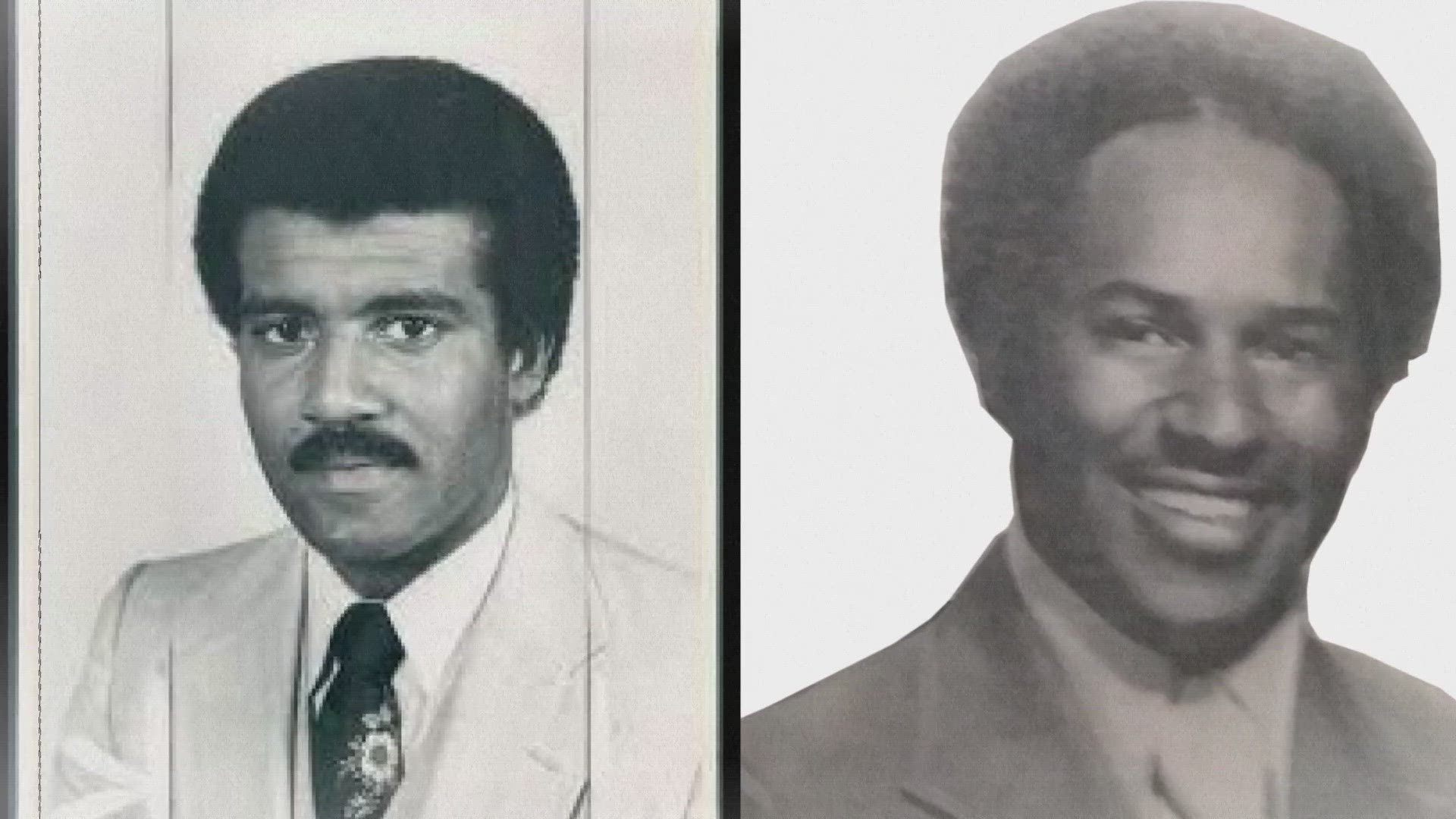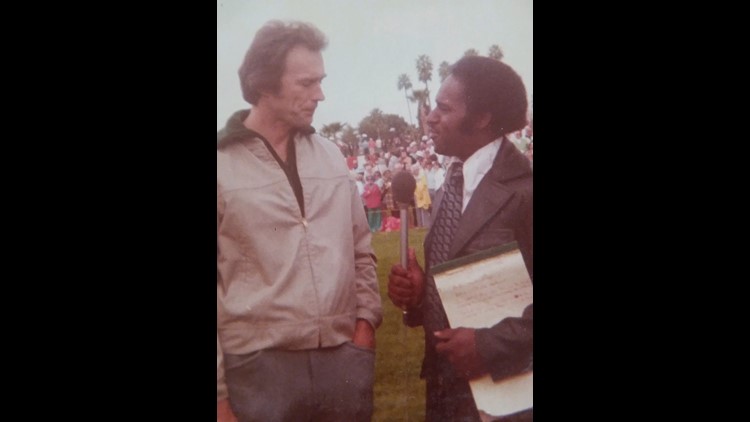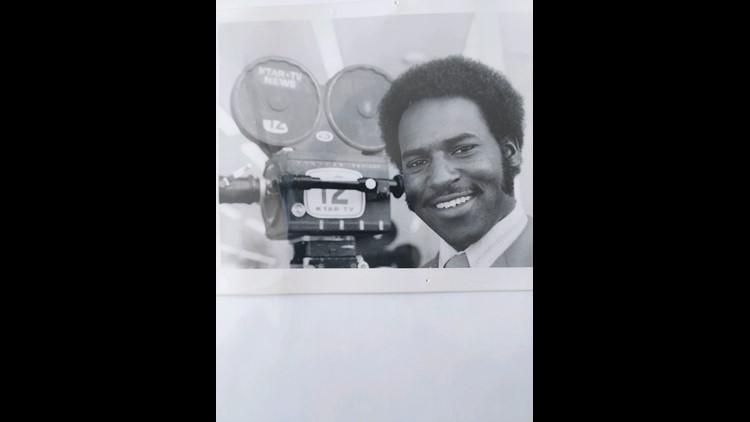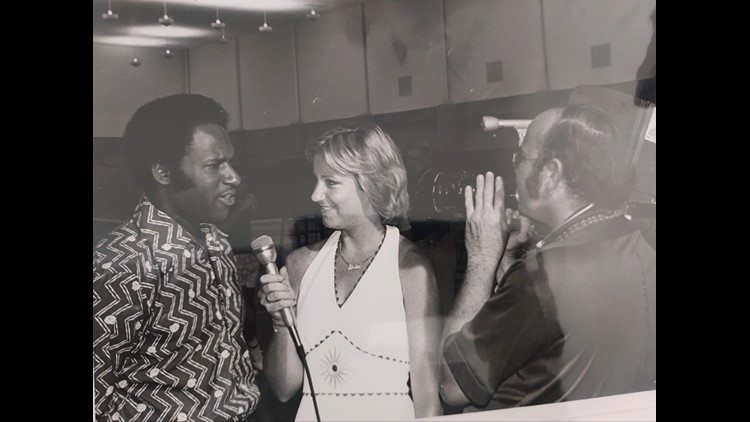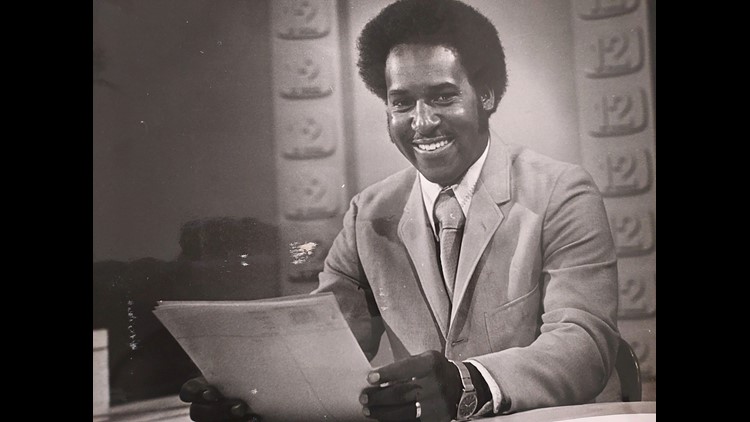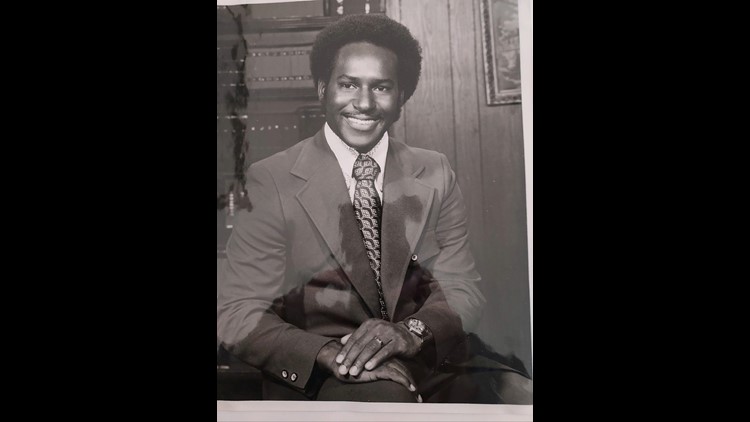PHOENIX — In the mid-1970s, Stan Stovall and Ron Brooks graced television screens across the Valley. Both men were born and raised in Phoenix.
The two never knew each other growing up, but a single moment at 12News bonded them for life.
For some, Stovall is considered a trailblazer or a legend.
“Some people say those words to describe me, but I have a hard time using them. To me, I’m just another taxpaying citizen, just like everybody else,” he said
But the truth is, Stovall is not like everyone else. As a young man, he paid a heavy price to pave a path that he walked alone for many years.
"Let's say it was difficult for them to accept a Black face on TV,” he said.
In November 2022, Stovall wrapped up a nearly 52-year career in broadcasting that took him from Arizona, Philadelphia, St. Louis, Burma, and Baltimore, where he became one of the most popular anchors in the city’s history.
At a young age, he said he was curious about the world. He delivered newspapers for the Arizona Republic. At first, a television career didn’t seem possible for him.
"You never saw African-Americans on TV. For that matter, you never saw women; you never saw Hispanics; you never saw Asians. It was a segregated industry limited to just white males," he said.
After the death of Dr. Martin Luther King, Jr. in 1968, television stations were forced by the Federal Communications Commission to integrate newsrooms to reflect the communities they served.
In 1970 at 17, while attending Carl Hayden High School, he was hired by KTVK-TV as the first black television reporter in Arizona.
Stovall said he attended the Arizona Boys State program to learn to become a student leader.
That’s when former Arizona Governor Ernest W. McFarland, and former owner of the station, heard his speech and offered him a job making $1.30 an hour.
A year later, at 18, he was named weekend anchor at the station—the first black news anchor in Arizona and the youngest in America.
"It was very important to me to be a positive role model and a good representative for our people breaking the glass ceiling because, for so many years before that, we just weren't given the opportunity,” said Stovall.
Breaking the glass came with racism in and out of the newsroom. He said his own colleagues would address him with racial slurs.
"This was the days before the internet and cell phones...so they would literally write you hate letters... and what is this "N' doing on air," said Stovall.
In 1974, after a pay dispute at KTVK-TV, where he said his white counterparts made more than he did but did less work, he crossed the street to work for Channel 12.
"Two days after, Channel 12 called me and offered me a job as weekend anchor and reporter paying me three times as much as I was making at Channel 3 at the time," Stovall said.
The move would prove beneficial while creating history and developing a decades-long friendship with Ron Brooks.
“I am the first black full-time sportscaster in the history of Arizona television," said Brooks.
Like Stovall, Brooks also grew up in Phoenix and attended South Mountain High School, but he said the two had mutual friends but didn’t know each other.
Brooks joined 12News in 1971. He initially worked behind the scenes as a film editor, news reporter, and weekend sports anchor.
Brooks credits Stovall for breaking the Arizona tv color barrier for helping him get on the air.
“Stan made it possible for me. When he got on the air, Channel 12 was looking for people of color to put on the air.
How Brooks became the weekend sports anchor is a story of simply being in the right place at the right time.
"Probably eight months we had a situation where the news reporter who doubled as weekend sports anchor could not get back in time to anchor the sports on the weekend news. They pulled me out of the film editing room. Put a shirt and tie and coat on me. Somebody helped me write a script. I got in front of the camera, did it live, and stayed on ever since," he said.
The duo became fast friends off camera and are still friends to this day.
For Brooks, working alongside Stovall provided an ally who understood the challenges and triumphs black journalists faced at the time.
“We’ve developed a bond. It’s good to know someone who walked the same walk that I walked and went through the same trials. It wasn’t easy getting on the air,” said Brooks.
One day in 1975, when then weekend co-anchor John Kalea called in sick the two couldn’t believe what was about to happen.
"Ron and I are both looking at the monitor, and we were absolutely mesmerized because we had never seen two African Americans on a news set together at the same time ever. It caught us by surprise. I turned to Ron and told him, 'Wow, I think we just made history,'" said Stovall.
"And we both just sat there and stared at the screen in the studio, and I said, 'Yes, it sure is,'" Brooks added.
Brooks said it was rare for him and Stovall to share the screen simultaneously.
Stovall questions why? "I don't know if it scared them or there was such a backlash that we can't have two black people on the set together at the same time," he adds.
The duo is now hoping to have their stories cemented in the history of Arizona broadcasting and hopes to inspire a new generation of journalists while honoring the past.
"If you go online and look it up...there's a whole list of former journalists who worked in Arizona and when they worked there or whatever. If you go that website, you will not find my name there despite the fact of being a trailblazer... for some reason, I'm not included in that at all,” said Stovall.
Both hope that as the Valley becomes more diverse, so will stations and newscasts.
Stovall who retired in November 2022, still calls Baltimore home but visits the Valley often to connect with family and friends.
Brooks lives in Prescott. After leaving 12News, he became a deputy sheriff, a corrections officer, and a minister before retiring.
Ron Brooks makes history as the first black full-time sportscaster in Arizona television
Up to Speed
Catch up on the latest news and stories on the 12News YouTube channel. Subscribe today.

